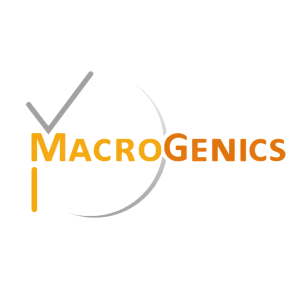MacroGenics Announces Updated Efficacy & Safety Data from TAMARACK Phase 2 Study of Vobra Duo in mCRPC Patients at ESMO Congress 2024
Rhea-AI Summary
MacroGenics (NASDAQ: MGNX) presented updated efficacy and safety results from the TAMARACK Phase 2 study of vobramitamab duocarmazine (vobra duo) for metastatic castration-resistant prostate cancer (mCRPC) at the ESMO Congress 2024. Key findings include:
- 6-month radiographic progression-free survival (rPFS) rate: 69% for 2.0 mg/kg arm, 70% for 2.7 mg/kg arm
- Median rPFS: ~8.5 months (2.0 mg/kg), ~7.5 months (2.7 mg/kg)
- Confirmed objective response rate: 20% (2.0 mg/kg), 40.6% (2.7 mg/kg)
- Median 6 doses administered, extending treatment duration compared to Phase 1
The company expects to have mature median rPFS data by early 2025, which will inform future development decisions.
Positive
- Encouraging 6-month landmark rPFS rates of 69-70% across both dosing arms
- Improved treatment duration with median 6 doses administered compared to Phase 1
- Confirmed objective response rates of 20% (2.0 mg/kg) and 40.6% (2.7 mg/kg)
- Reduced rates of pleural effusion, pericardial effusion, and PPE compared to Phase 1
Negative
- Eight fatal treatment-related adverse events reported
- High rates of Grade ≥3 treatment-emergent adverse events (62.8-65.6%)
- Significant treatment discontinuation rates due to adverse events (25.6-38.4%)
- High dose reduction rates due to adverse events (50-54.7%)
Insights
The TAMARACK Phase 2 study results for vobra duo in mCRPC patients show encouraging antitumor activity. Key findings include:
- 6-month rPFS rates of
69% (2.0 mg/kg) and70% (2.7 mg/kg) - Confirmed ORR of
20% (2.0 mg/kg) and40.6% (2.7 mg/kg) - Median treatment duration of 6 doses, an improvement from Phase 1
However, safety concerns persist with
The TAMARACK study demonstrates vobra duo's potential in mCRPC treatment. Notably, the 6-month rPFS rates and ORR are promising, especially in the challenging landscape of advanced prostate cancer. The comparable efficacy in taxane-naïve and pre-treated patients is particularly interesting, suggesting potential broad applicability.
However, the safety profile remains concerning. The high rates of Grade ≥3 TEAEs and treatment discontinuations due to AEs could limit clinical utility. The reduction in pleural effusion, pericardial effusion and PPE rates compared to Phase 1 is positive, but still substantial. The eight fatal treatment-related AEs underscore the need for careful patient selection and monitoring in future trials or potential clinical use.
MacroGenics' vobra duo shows promise, but faces challenges. The efficacy data is encouraging, potentially positioning vobra duo as a competitive option in the mCRPC market. However, the safety profile could limit its market potential and increase development costs.
Key financial considerations:
- Potential for expanded indications (taxane-naïve and pre-treated patients)
- Possible need for additional safety studies, impacting time-to-market and costs
- Competitive landscape assessment important for market positioning
- Partnering opportunities may offset development costs and risks
Investors should watch for mature median rPFS data in early 2025, which will be critical for assessing vobra duo's market potential and MacroGenics' future revenue prospects.
- Encouraging antitumor activity demonstrated with vobra duo as measured by 6-month landmark rPFS rate and ORR
- Patients remained on vobra duo through a median of 6 doses (ranging up to 12), representing an extension of treatment duration as compared to Phase 1 mCRPC dose expansion cohort
- Company expects to have mature median rPFS no later than early 2025
- MacroGenics to host an investor call to review key data presented at ESMO and provide a general corporate update on Monday, September 16, 2024, at 8:00 a.m. ET
ROCKVILLE, MD, Sept. 15, 2024 (GLOBE NEWSWIRE) -- MacroGenics, Inc. (NASDAQ: MGNX), a biopharmaceutical company focused on discovering, developing, manufacturing and commercializing innovative antibody-based therapeutics for the treatment of cancer, today presented updated efficacy and safety results from the TAMARACK Phase 2 study of vobramitamab duocarmazine (vobra duo), an antibody-drug conjugate (ADC) that targets B7-H3, for patients with metastatic castration-resistant prostate cancer (mCRPC). The data were featured in a poster presentation at the European Society for Medical Oncology (ESMO) Congress, taking place in Barcelona, Spain from September 13-17, 2024.
“A key reason for conducting the TAMARACK study was to test the hypothesis that we could improve upon the duration of vobra duo treatment observed in the Phase 1 study by reducing the starting dose from 3.0 mg/kg to either 2.0 or 2.7 mg/kg and increasing the dosing interval from every three weeks to every four weeks. In doing so, our aim was to improve safety and tolerability, extend the treatment duration and achieve improved rPFS as compared to the result in our Phase 1 mCRPC dose expansion cohort,” said Scott Koenig, M.D., Ph.D., President and CEO of MacroGenics. “We believe that these latest results from TAMARACK continue to demonstrate that vobra duo is an active drug in prostate cancer. Ultimately, our path forward for the molecule will depend on the final safety and efficacy data, including mature median rPFS, which we expect to have in hand no later than early 2025. We expect to make decisions about potential future development in the context of a competitive treatment landscape assessment, resource allocation across our clinical portfolio and potential partnering opportunities for vobra duo.”
TAMARACK Study Demographics
The abstract submitted to ESMO was based on a data cut-off as of April 12, 2024; updated data based on a cut-off date of July 9, 2024, are included below and are reported in the Company’s poster presentation at ESMO.
The TAMARACK trial enrolled a total of 181 participants, with 176 participants receiving at least one dose of vobra duo at either 2.0 mg/kg q4W (n=90) or 2.7 mg/kg q4W (n=86). As of the data cut-off date, 23 and 16 participants remained on treatment in the 2.0 mg/kg and 2.7 mg/kg cohorts, respectively. While mCRPC study participants are no longer being dosed in the study, participants continue to be monitored for adverse events, disease progression, and survival.
Baseline Characteristics:
- Enrolled study participants had a median age of 70 years (range, 35-89).
- 88 Study participants (
48.6% ) had an ECOG performance status of 1 or 2. - 30 Study participants (
16.6% ) had visceral disease at baseline, with liver or lung disease in 25 participants (13.8% ). - 81 Study participants (
44.8% ) had measurable disease at baseline, and 97 (53.6% ) had received prior taxane. - Both treatment arms were well-balanced across most baseline characteristics, including prior use of taxanes, androgen receptor axis-targeted (ARAT) treatment, poly-ADP ribose polymerase (PARP) treatment, and baseline PSA.
TAMARACK Efficacy Results as of July 9, 2024 Cut-off Date
Overall, the Company believes that the results to date from the TAMARACK study indicate antitumor activity associated with vobra duo in mCRPC as demonstrated by the protocol-specified primary endpoint of landmark 6-month radiographic progression-free survival (rPFS) rate, as well as other measures of tumor response.
- In the intent-to-treat (ITT) population, 6-month rPFS rate was
69% for the 2.0 mg/kg arm (95% CI, 57-79) and70% for the 2.7 mg/kg arm (95% CI, 58-79). - Landmark 6-month rPFS rates were consistent across taxane-naïve study participants (ranging from 66
-82% ) and taxane pre-treated study participants (ranging from 60-73% ), regardless of treatment arm. - Although immature, with only 65 PFS events (
35.9% ) as of the data cut-off, median rPFS was approximately 8.5 months for the 2.0 mg/kg cohort (95% CI, 7.2-11.2) and 7.5 months for the 2.7 mg/kg cohort (95% CI, 7.2-10.6). Because these results were immature as of the cutoff date, they are likely to change as additional events accrue.
Tumor response rates
- Out of 45 RECIST-response evaluable patients in the 2.0 mg/kg arm, the confirmed objective response rate (ORR) was
20.0% (n=9) and the unconfirmed ORR was26.7% (n=12). - Out of 32 RECIST-response evaluable patients in the 2.7 mg/kg arm, the confirmed ORR was
40.6% (n=13) and the unconfirmed ORR was46.9% (n=15). - Confirmed ORR was comparable between taxane-naïve study participants (
26.7% , n=12/45) and taxane pre-treated study participants (17.5% , n=11/63), regardless of treatment arm. - Tumor responses did not appear to correlate with baseline B7-H3 expression based on archival tissue samples of mixed age.
TAMARACK Safety Results as of July 9, 2024 Cut-off Date
Overall summary of adverse events (AEs)
- In the 2.0 mg/kg cohort,
65.6% of study participants (n=59) experienced a Grade ≥3 treatment-emergent AE (TEAE); this cohort had a discontinuation rate of25.6% (n=23) and a dose reduction rate of50.0% (n=45) due to TEAEs. - In the 2.7 mg/kg cohort,
62.8% of study participants (n=54) experienced a Grade ≥3 TEAE; this cohort had a discontinuation rate of38.4% (n=33) and a dose reduction rate of54.7% (n=47) due to TEAEs. - The most common (occurring in ≥
20% of study participants) all-grade TEAEs were: asthenia, edema peripheral, decreased appetite, nausea, pleural effusion, diarrhea, fatigue, constipation, anemia, palmar-plantar erythrodysesthesia (PPE, or hand-foot syndrome), neutropenia, and stomatitis. The majority of TEAEs with a ≥10% incidence rate in either treatment arm was limited to Grade 1/2 events. - Rates of pleural effusion, pericardial effusion, and PPE for both the 2.0 mg/kg cohort (
28.8% ,13.3% ,18.9% , respectively) and the 2.7 mg/kg cohort (44.2% ,17.5% ,28% , respectively) decreased compared to the Phase 1 mCRPC dose expansion cohort (48.8% ,17.1% ,46.3% , respectively), despite an increased median number of doses of vobra duo administered on TAMARACK. - Eight fatal treatment-related AEs as assessed by the treating physician: five in the 2.0 mg/kg cohort and three in the 2.7mg/kg cohort. These include three events of pneumonitis, and one event each of cardiac failure, stress cardiomyopathy, ventricular fibrillation, pleural effusion, and gastrointestinal hemorrhage.
- Rates of treatment-related AEs (including all grades and Grade ≥3) and treatment-related severe AEs were similar between taxane-naïve and taxane pre-treated study participants.
Tolerability findings
- In the 2.0 mg/kg cohort,
25.6% of study participants (n=23) remained on study drug as of July 9, 2024. Study participants received a median number of 6 doses (range, 1-11), with a median dose intensity (calculated as a percentage of the total planned dose that was administered) of92.6% (range, 64.2-106.1% ). - In the 2.7 mg/kg cohort,
18.6% of study participants (n=16) remained on study drug as of the data cut-off date. Study participants received a median number of 6 doses (range, 1-12), with a median dose intensity of81.7% (range, 40.5-104.3% ). - Taxane-naïve study participants experienced higher rates of dose reductions due to TEAEs (
62.7% ) and dose interruptions due to TEAEs (70.7% ) compared to taxane pre-treated study participants (44.6% and43.6% , respectively).
ESMO Poster Presentation
Title: TAMARACK: Randomized Phase 2 trial of the B7-H3 targeting antibody drug conjugate (ADC) vobramitamab duocarmazine (vobra duo) in metastatic castration-resistant prostate cancer (mCRPC)
Presenter / Lead Author: Johann de Bono, M.D., M.Sc., Ph.D., FRCP, FMedSci, Division of Clinical Studies, Royal Marsden Hospital Institute of Cancer Research, Sutton, UK
Presentation ID: 1654P
Session Date: Sunday, September 15, 2024
Poster Display Time: 9:00 a.m. – 5:00 p.m. CEST
The poster presentation is available for download under "Events & Presentations" in the Investor Relations section of MacroGenics’ website at http://ir.macrogenics.com/events.cfm.
Conference Call
The Company will host a conference call to discuss the TAMARACK poster data and provide a general corporate update on Monday, September 16, 2024, at 8:00am ET. The call will be led by Scott Koenig, M.D., Ph.D., President and Chief Executive Officer; Stephen Eck, M.D., Ph.D., Senior Vice President - Chief Medical Officer; and Jim Karrels, Senior Vice President - Chief Financial Officer.
To participate via telephone, please register in advance at this link. Upon registration, all telephone participants will receive a confirmation email detailing how to join the conference call, including the dial-in number along with a unique passcode and registrant ID that can be used to access the call. The listen-only webcast of the conference call can be accessed under "Events & Presentations" in the Investor Relations section of the Company's website at http://ir.macrogenics.com/events.cfm. A recorded replay of the webcast will be available shortly after the conclusion of the call and archived on the Company's website for 30 days following the call.
About Vobra Duo and the TAMARACK Study
Vobra duo is an antibody-drug conjugate (ADC) that targets B7-H3, an antigen with broad expression across multiple solid tumors and a member of the B7 family of molecules involved in immune regulation. The TAMARACK Phase 2 study of vobra duo is being conducted in participants with mCRPC who were previously treated with one prior androgen receptor axis-targeted therapy (ARAT). Participants may have received up to one prior taxane-containing regimen, but no other chemotherapy agents. The TAMARACK study is designed to evaluate vobra duo at two different doses: 2.0 mg/kg or 2.7 mg/kg every four weeks (q4W).
About MacroGenics, Inc.
MacroGenics (the Company) is a biopharmaceutical company focused on discovering, developing, manufacturing and commercializing innovative monoclonal antibody-based therapeutics for the treatment of cancer. The Company generates its pipeline of product candidates primarily from its proprietary suite of next-generation antibody-based technology platforms, which have applicability across broad therapeutic domains. The combination of MacroGenics' technology platforms and protein engineering expertise has allowed the Company to generate promising product candidates and enter into several strategic collaborations with global pharmaceutical and biotechnology companies. For more information, please see the Company's website at www.macrogenics.com. MacroGenics and the MacroGenics logo are trademarks or registered trademarks of MacroGenics, Inc.
Cautionary Note on Forward-Looking Statements
Any statements in this press release about future expectations, plans and prospects for MacroGenics (“Company”), including statements about the Company’s strategy, future operations, clinical development of and regulatory plans for the Company’s therapeutic candidates, expected timing of the release of final safety and efficacy data, including mature median rPFS and other statements containing the words “subject to”, "believe", “anticipate”, “plan”, “expect”, “intend”, “estimate”, “potential,” “project”, “may”, “will”, “should”, “would”, “could”, “can”, the negatives thereof, variations thereon and similar expressions, or by discussions of strategy constitute forward-looking statements within the meaning of Section 27A of the Securities Act of 1933 and Section 21E of the Securities Exchange Act of 1934. Actual results may differ materially from those indicated by such forward-looking statements as a result of various important factors, including: risks that TZIELD, vobramitamab duocarmazine, lorigerlimab, ZYNYZ, MARGENZA or any other product candidate’s revenue, expenses and costs may not be as expected, risks relating to TZIELD, vobramitamab duocarmazine, lorigerlimab, ZYNYZ, MARGENZA or any other product candidate’s market acceptance, competition, reimbursement and regulatory actions; future data updates, especially timing and results of mature median radiographic progression-free survival, other efficacy and safety data with respect to vobramitamab duocarmazine; our ability to provide manufacturing services to our customers; the uncertainties inherent in the initiation and enrollment of future clinical trials; the availability of financing to fund the internal development of our product candidates; expectations of expanding ongoing clinical trials; availability and timing of data from ongoing clinical trials; expectations for the timing and steps required in the regulatory review process; expectations for regulatory approvals; expectations of future milestone payments; the impact of competitive products; our ability to enter into agreements with strategic partners and other matters that could affect the availability or commercial potential of the Company's product candidates; business, economic or political disruptions due to catastrophes or other events, including natural disasters, terrorist attacks, civil unrest and actual or threatened armed conflict, or public health crises; costs of litigation and the failure to successfully defend lawsuits and other claims against us; and other risks described in the Company's filings with the Securities and Exchange Commission. In addition, the forward-looking statements included in this press release represent the Company's views only as of the date hereof. The Company anticipates that subsequent events and developments will cause the Company's views to change. However, while the Company may elect to update these forward-looking statements at some point in the future, the Company specifically disclaims any obligation to do so, except as may be required by law. These forward-looking statements should not be relied upon as representing the Company's views as of any date subsequent to the date hereof.
###








